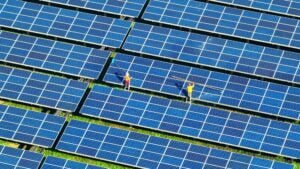The construction industry in Southeast Asia is set for major changes in 2024. Valued at around $538.5 billion, the Southeast Asia Construction Market Trends 2024 is expected to grow rapidly due to technology, sustainability, and government initiatives.
This article below highlights the key trends that are shaping the future of construction in the region.
What’s the Current Status of the Southeast Asia Construction Market?
Southeast Asia’s construction boom is driven by rapid urbanization, population growth, and an expanding middle class. The market is expected to grow over 6.2% annually from 2024 to 2028, fueled by investments in infrastructure and housing projects. Construction is not only boosting the economy but also improving living standards and connectivity across the region.
Read Also: Southeast Asia Construction Market Outlook 2023-2027: Trends and Projections
Key Trends for Growth
Let’s take a look at the Southeast Asia Construction Market Trends 2024:
1. Technological Development
Technology is transforming Southeast Asia’s construction industry. Innovative tools like Building Information Modeling (BIM), drones, and advanced management software have significantly improved project efficiency and accuracy.
BIM, for example, helps with better project planning and visualization, reducing errors and delays. Drones are now used for site surveys and inspections, providing real-time data to make informed decisions. AI and machine learning are also helping companies manage resources better and predict potential issues.
These technologies not only make construction faster and safer but also more sustainable, allowing companies to adapt quickly to changing market conditions.
2. Sustainability Initiatives
Sustainability is becoming a core focus in Southeast Asian construction. Governments and developers are increasingly adopting eco-friendly building practices due to environmental concerns and stricter regulations.

For example, Indonesia and Vietnam are now concentrating on the affordability of housing projects with the use of sustainable materials and energy-efficient designs. The Indonesian government has set a goal of five million more affordable housing units by 2027, focusing on green building standards. Similarly, Singapore invests in carbon capture technologies that reduce emissions from the construction activities.
This shift to sustainability is not only good for the planet but lures investment. Green-practice-oriented projects are more likely to see funding from both public and private investors who increasingly look to align themselves with environmentally friendly endeavors.
3. Government Initiatives and Investments
Governmental policies and initiatives always play a vital role in molding the perspective of construction activities in Southeast Asia. Most governments now spend a handsome amount on developing infrastructure, as this is considered imperative for economic development and regional connectivity.
Some notable examples include:
- The Philippines’ “Build, Build, Build” program, which involves the construction of major infrastructure projects such as roads, bridges, and railways.
- Indonesia’s focus on developing the country’s infrastructure, including the construction of new airports, seaports, and toll roads.
- Malaysia’s investments in transportation infrastructure, such as the East Coast Rail Link (ECRL) and the Kuala Lumpur-Singapore High-Speed Rail project.
These initiatives by governments create an enabling environment that favors public-private partnerships and foreign investments in the sector. With increased focus on improving transportation networks, energy systems, and public facilities by governments, construction services will be in demand.
Conclusion
The Southeast Asia Construction Market Trends 2024 is evolving rapidly, driven by technology, sustainability, and government support. As the region continues to develop, construction companies must be agile and innovative to seize these opportunities. By embracing new technologies, prioritizing green practices, and aligning with government initiatives, the construction industry can help drive Southeast Asia’s growth and meet the needs of its expanding population. Read other interesting articles at MR Southeast Asia.

